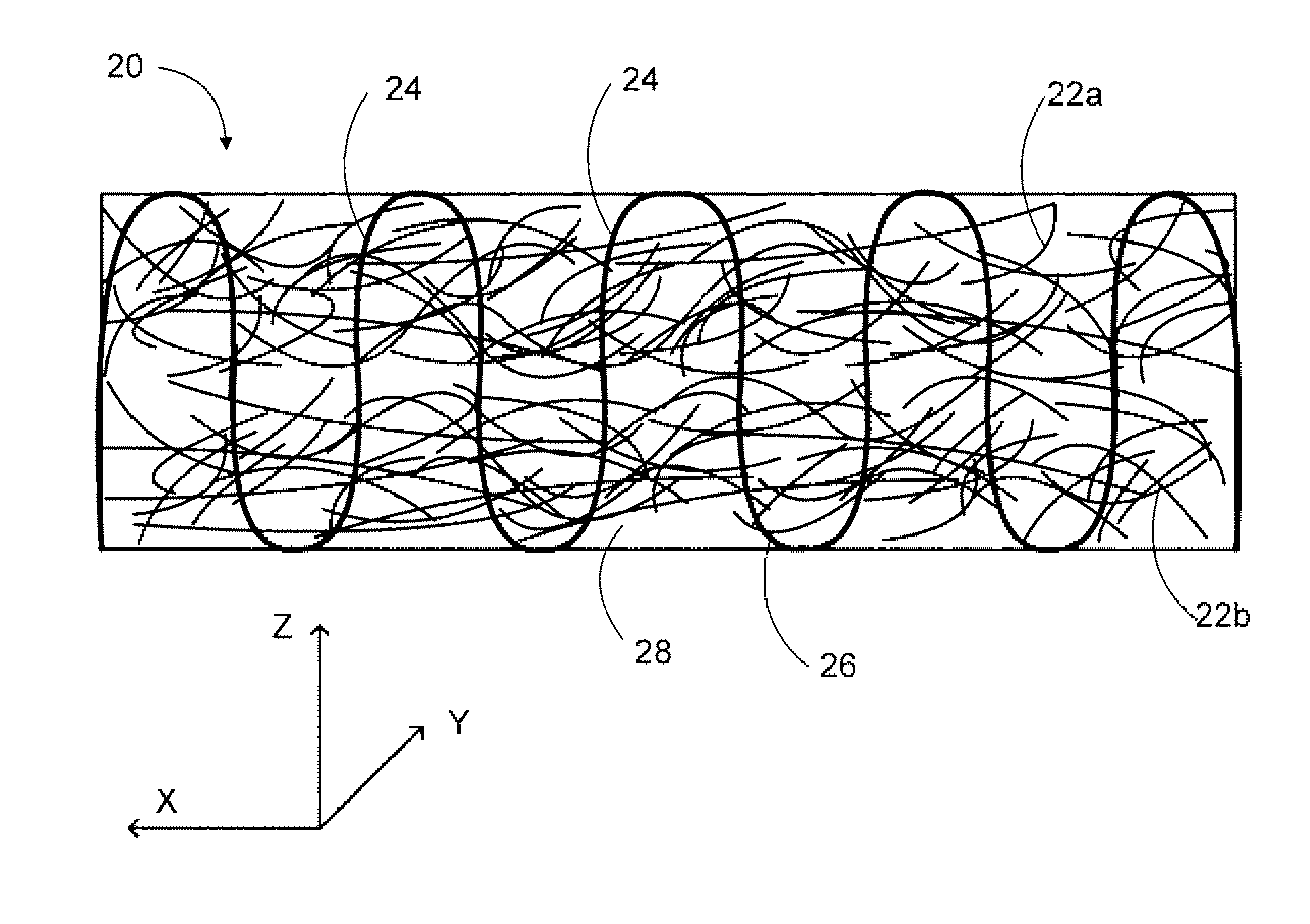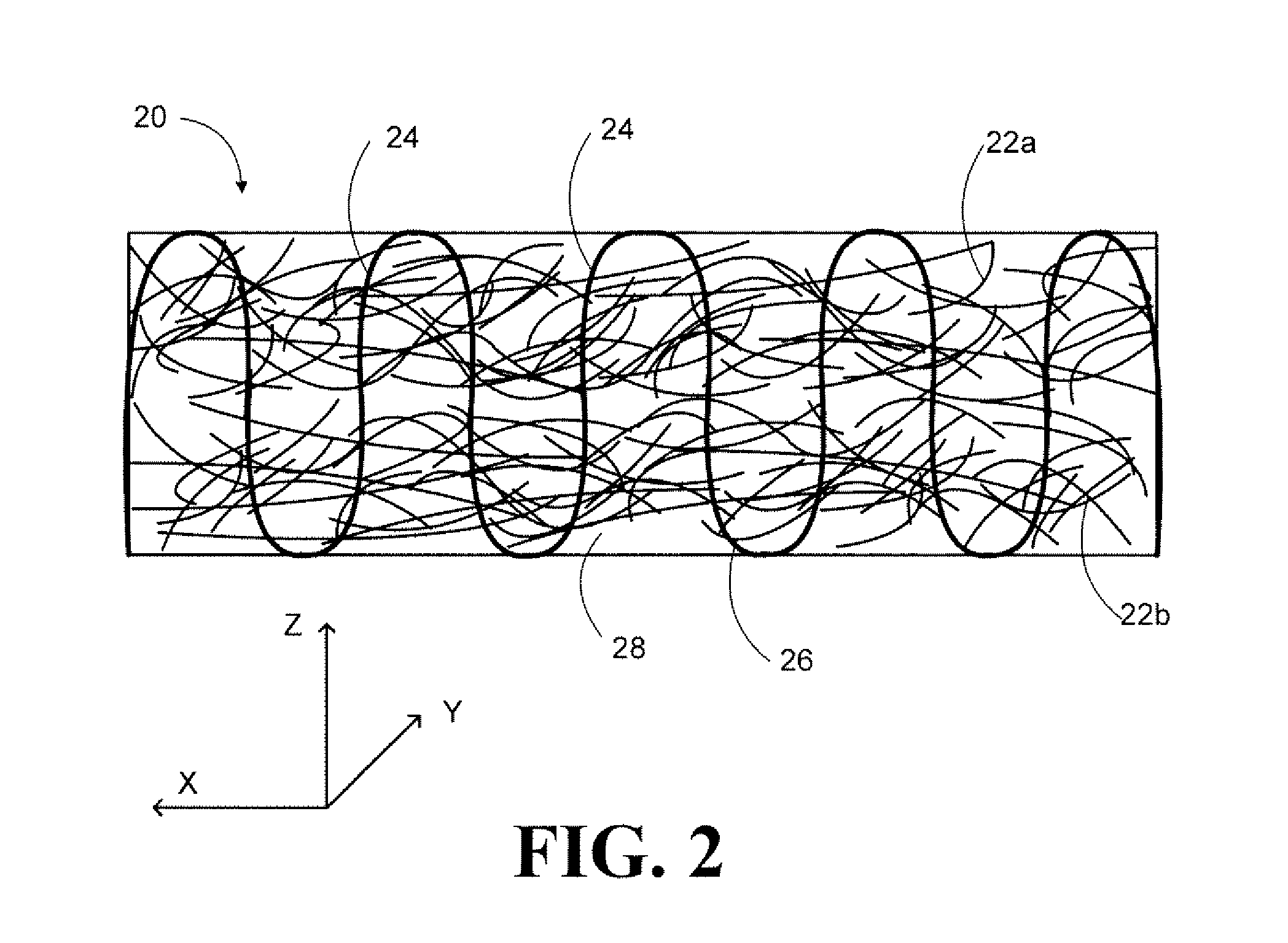Composite material and method for increasing z-axis thermal conductivity of composite sheet material
a composite material and thermal conductivity technology, applied in the field of structural composite materials, can solve the problems of reducing affecting the etc., and achieve the effect of increasing the z-axis thermal conductivity of the composite material
- Summary
- Abstract
- Description
- Claims
- Application Information
AI Technical Summary
Benefits of technology
Problems solved by technology
Method used
Image
Examples
example 1
[0068]A fiberglass fabric composite with through-thickness stitched copper wires (i.e., 0.006″ high purity copper wire from McMaster-Carr) and CNT yarn (i.e., 3Tex nanotube yarns from Nanocomp (about 20-80 microns in diameter. 2-5 gram / kilometer, and 1.33 g / cm2 density)) was made. A fine point needle was used to stitch the wires and yarns through the fiberglass material to form the composite. The composite was then cured with Epon 862 from flexion Specialty Chemicals using a VIP process. The stitching patterns, copper wires, and nanotube yarns were visible at the surface of the samples. The volume fractions of copper and nanotube yarns in the composites were 5 volume % and 0.4 volume % respectively.
example 2
[0069]Three samples were made with three layers of E-glass fiber and Epon 862. Sample 1 had 0.4% CNT yarn (i.e., 3Tex nanotube yarns from Nanocomp (about 20-80 microns in diameter, 2-5 gram / kilometer, and 1.33 g / cm2 density)) by volume fraction (Vf), Sample 2 had 1.8% copper by Vf, and Sample 3 had 5.0% copper by Vf stitched into a E-glass fiber preform. The copper wire was 0.006″ high purity copper wire from McMaster-Carr. The CNT yarn was stitched using the over-and-under technique, while the copper sample was made with the single through-stitch technique.
[0070]The experimental results showed significant increases in through-thickness thermal conductivity. The fiberglass samples were tested in a Netzsch LEA 457 Microflash machine and the thermal diffusivity results are shown in FIGS. 3-6. Table 1 shows the comprehensive results data collected on the samples stitched with CNT yarn and copper wire and provide the calculated thermal conductivity. The thermal conductivity was calculat...
PUM
| Property | Measurement | Unit |
|---|---|---|
| volume fraction | aaaaa | aaaaa |
| thickness | aaaaa | aaaaa |
| diameter | aaaaa | aaaaa |
Abstract
Description
Claims
Application Information
 Login to View More
Login to View More - R&D
- Intellectual Property
- Life Sciences
- Materials
- Tech Scout
- Unparalleled Data Quality
- Higher Quality Content
- 60% Fewer Hallucinations
Browse by: Latest US Patents, China's latest patents, Technical Efficacy Thesaurus, Application Domain, Technology Topic, Popular Technical Reports.
© 2025 PatSnap. All rights reserved.Legal|Privacy policy|Modern Slavery Act Transparency Statement|Sitemap|About US| Contact US: help@patsnap.com



